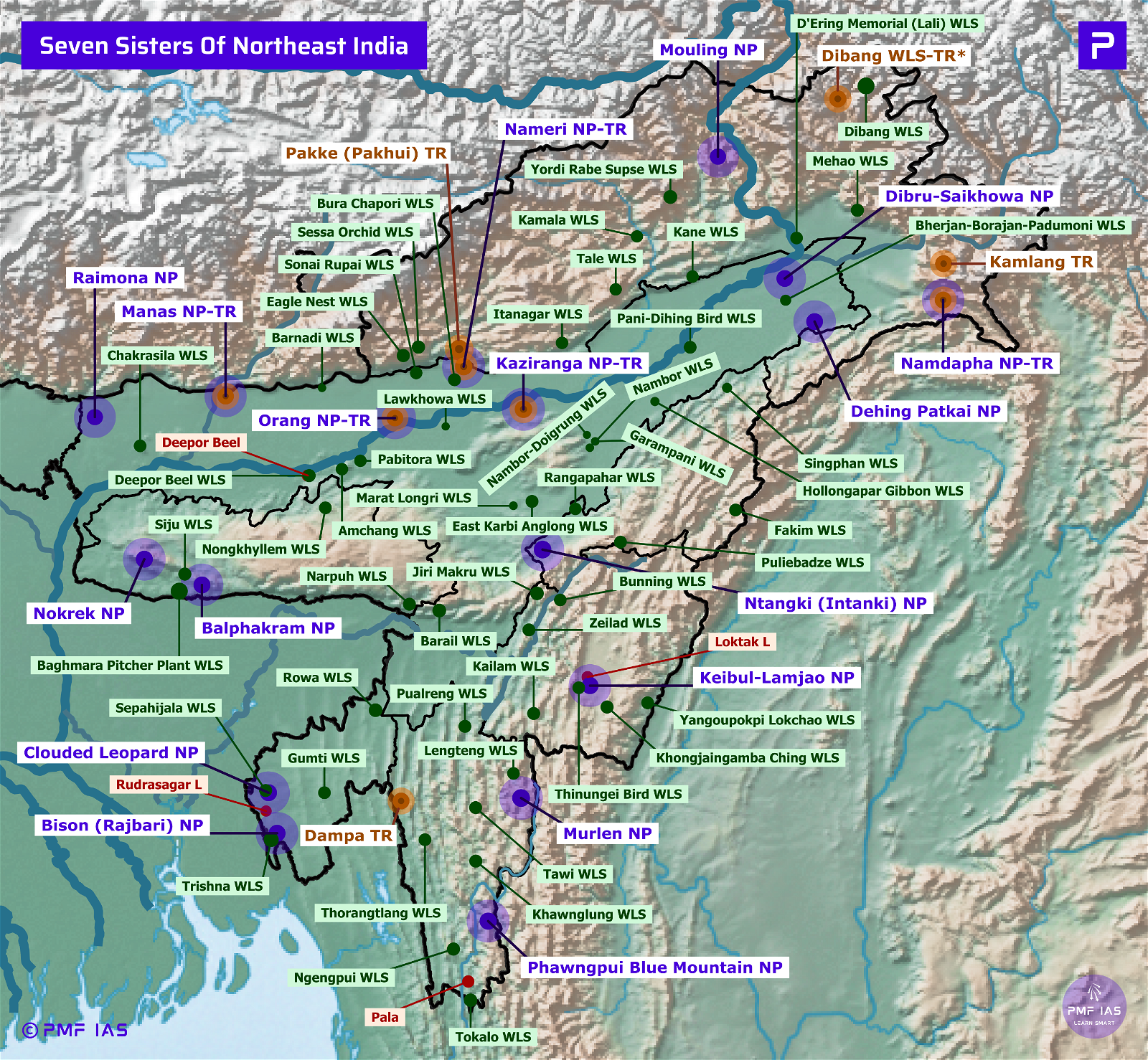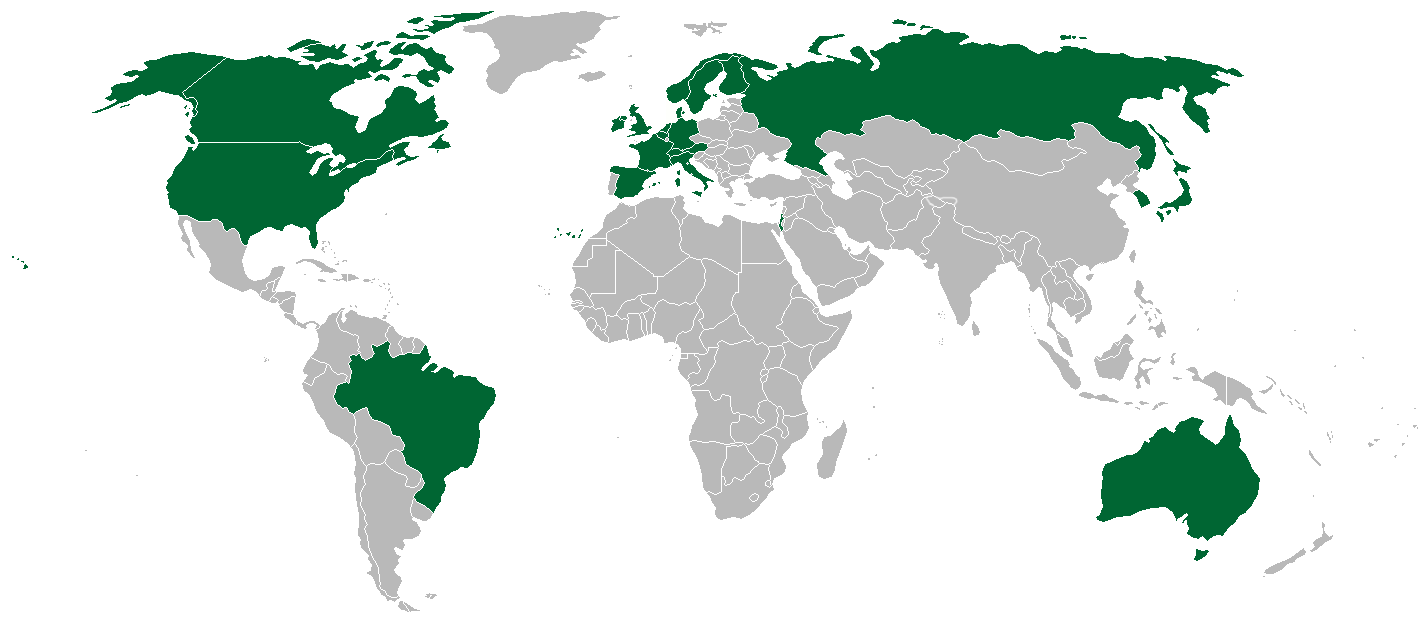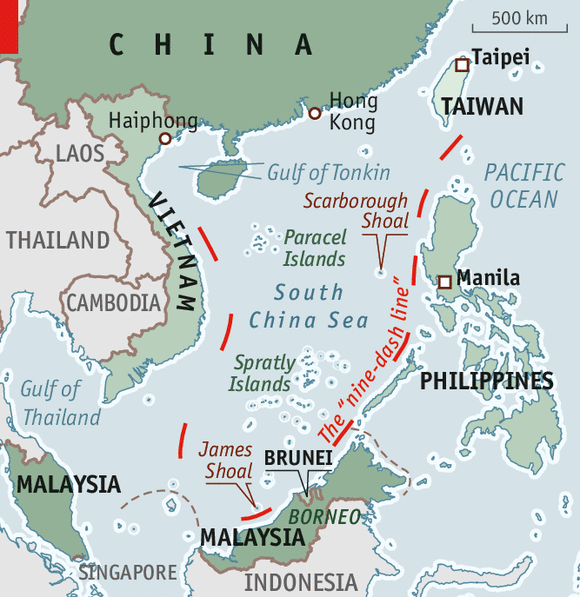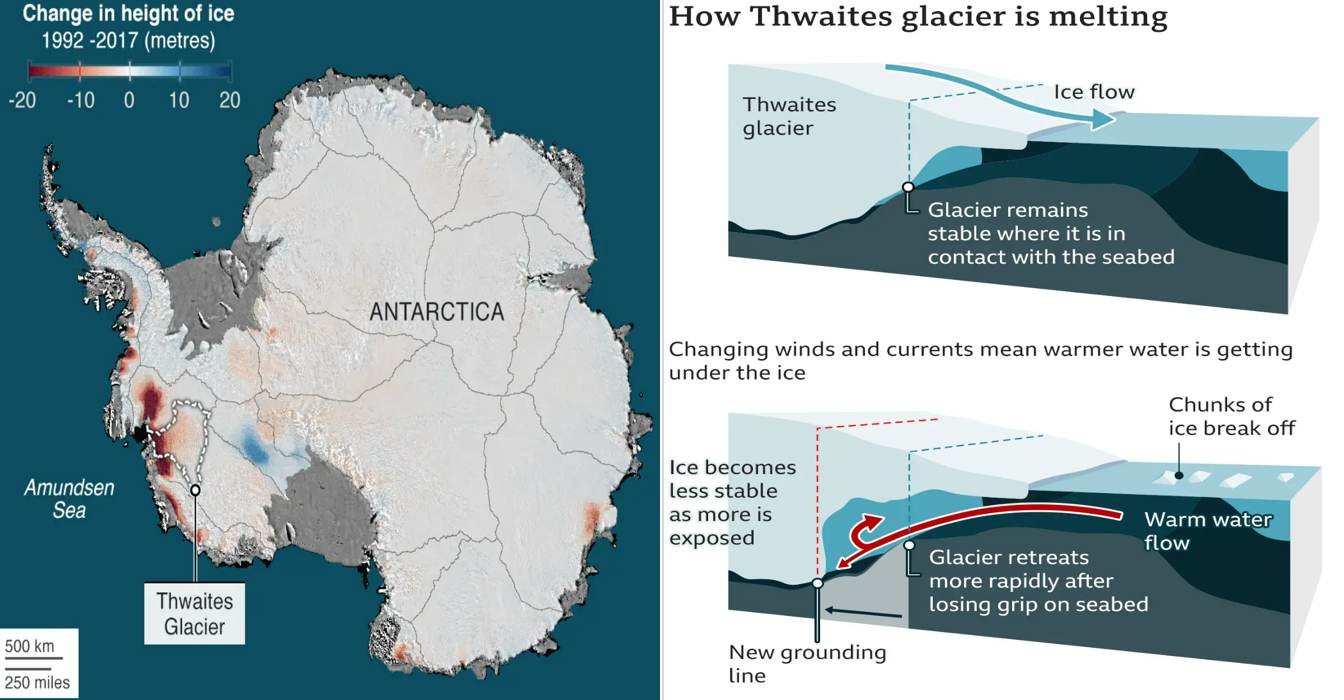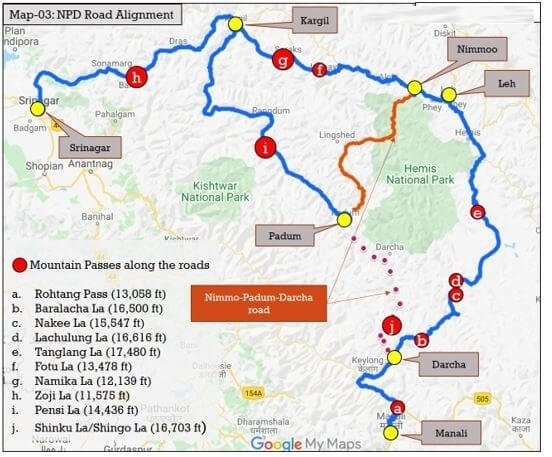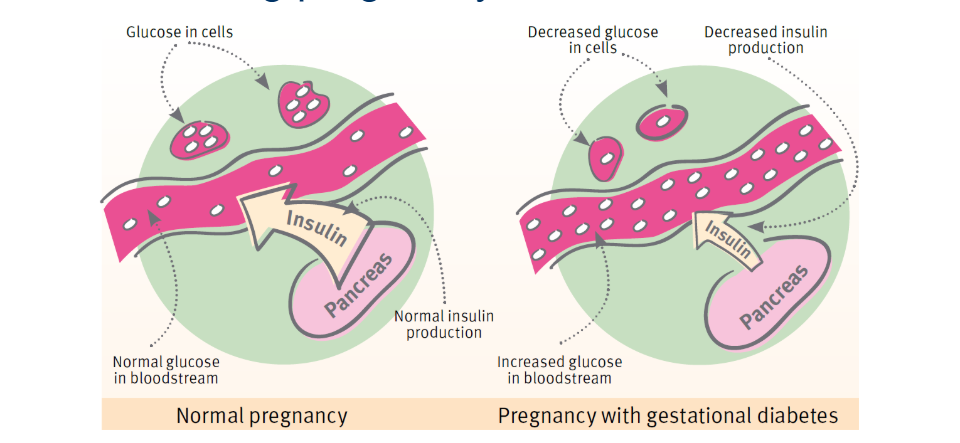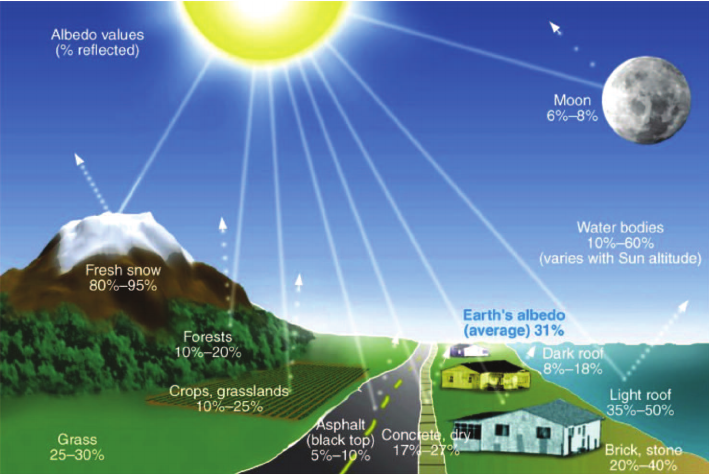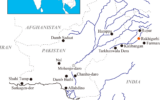
Current Affairs for UPSC Civil Services Exam – May 22, 2024
Subscribers of "Current Affairs" course can Download Daily Current Affairs in PDF/DOC
Subscribe to Never Miss an Important Update! Assured Discounts on New Products!
Must Join PMF IAS Telegram Channel & PMF IAS History Telegram Channel
{GS1 – Geo – PG – Climatology} Turbulence
- Context (IE | TH): Singapore Airlines flight operating from London to Singapore encountered “severe turbulence” en route resulting in injuries to many passengers.
What is turbulence?
- Turbulence means disruption of airflow over the wings of an aeroplane, which causes it to enter irregular vertical motion.

Credit: Pilotmall
Types of Turbulence
Wind Shear
- This happens when there is a sudden change in wind direction, whether vertically or horizontally. Typically occurs close to thunderstorms, jet streams, etc.; tricky for pilots as tailwinds suddenly change to headwinds or vice versa.

Credit: Vecteezy
Frontal
- Created in the frontal zone when warm air is lifted by sloping frontal surface and friction between opposing air masses. Its intensity increases with thunderstorms.

Credit: Weather
Convective
- When land surface temperature rises, the air above the ground heats up and rises, creating air pockets around it. Convection currents cause difficulties during approach as they tend to affect the rate of descent.

Credit: Weather
Wake
- Forms behind an aircraft when it flies through air-creating wingtip vortices.

Credit: Pilotmall
Mechanical
- This type of turbulence occurs when tall solid objects such as mountains or highrise constructions disrupt the normal airflow, causing the air for planes to fly through to become dirty.
Clean air
- Occurs when an aircraft crosses from one air mass to another, which has a different direction. Clear air turbulence could also happen when an aircraft moves out of a jet stream. It is mainly caused by wind or jet streams.

Credit: Glasgow Times
Mountain wave
- These are oscillations that form on the downwind side of mountains when strong winds flow towards mountains in a perpendicular fashion. Aircraft tracking perpendicularly across, or downwind of a mountain, may experience sudden loss of altitude followed by a sudden reduction in airspeed.

Credit: CNN
How common is turbulence?
- From 2000-18, turbulence accounted for more than a third of reported events.
How do planes react to air turbulence?
- The effect of turbulence varies from plane to plane and seat to seat. Long planes can feel most turbulent at the back and the ideal spot is around the centre of gravity, which is typically just ahead of the wings.
Are turbulence incidents dangerous?
- Some form of turbulence is experienced on a regular basis. The impacts of turbulence depend on its nature and intensity.
Is climate change causing more turbulence?
- A report from the University of Reading suggested incidents of turbulence could double or triple in the jet streams due to climate change.
{GS2 – IR – Multilateral} 46th Antarctic Treaty Consultative Meeting **
- Context (IE | DTE): India is hosting the 46th Antarctic Treaty Consultative Meeting (ATCM 46) in Kochi.
- Organised by: The National Centre for Polar and Ocean Research, Ministry of Earth Sciences (MoES).
- India last hosted the ATCM in New Delhi in 2007.
About the Antarctic Treaty Consultative Meeting
- The original twelve Parties to the Treaty and those Parties that demonstrate their interest in Antarctica by conducting substantial research activity are together called the Consultative Parties.
- From 1961 to 1994, the ATCM met every two years. Since 1994, the meetings are annual.
- They meet to exchange information, consult on common interests in Antarctica, and formulate and recommend measures to their governments.
- The meetings are hosted by Consultative Parties in alphabetical order of their English names.
- Only Consultative Parties participate in decision-making.
- Consultative status is open to any country that can demonstrate its commitment to Antarctica by conducting significant research.
- ATCM approval is required for new construction or initiatives in Antarctica.
Discussion Topics at ATCM
- Sustainable management of Antarctica and its resources.
- Biodiversity prospecting.
- Inspections and exchange of information and data.
- Research, collaboration, capacity building, and cooperation.
- Climate change impacts on Antarctica and beyond.
The Antarctic Treaty
- Signed by 12 countries on December 1, 1959.Came into force in 1961.
- 56 countries have joined, including India in 1983.
- Of the 56 nations in the Antarctic Treaty, 29 have consultative party status.
- India has been a consultative party to the Antarctic Treaty since 1983.
- In 2022, India enacted the Antarctic Act, reaffirming its commitment to the Antarctic Treaty.
|
Key Features of the Treaty
- Antarctica is designated for peaceful purposes only.
- No militarisation or fortification is allowed.
- Signatories can carry out scientific investigations freely.
- Scientific data and plans should be shared and cooperation extended.
- Nuclear testing and radioactive waste disposal are prohibited in Antarctica.
Issues concerning Antarctica
- India has expressed concerns regarding tourism–related activities in Antarctica since 2016. Increasing numbers of tourists and research stations in the region could lead to more microplastics and “gray water”
- Steps taken: India would introduce a new working group for regulating tourism on the continent.
- Bioprospecting has emerged as a challenge.
- The Scientific Committee on Antarctic Research (SCAR), an interdisciplinary body of the International Science Council, has seen microorganism collections in Antarctica for pharmaceutical use.
- There is no mechanism in place under the Antarctic Treaty to regulate such commercial activity.
Indian Research Stations in AntarcticaDakshin Gangotri
Maitri
Bharati
Maitri II
|
{GS3 – Envi – Degradation} Human-induced environmental changes and spike in disease outbreaks
- Context (IE): According to ‘A meta-analysis on global change drivers and the risk of infectious disease’, published in the journal Nature, human-induced changes are the leading drivers of disease spread.
- The research focused on five key global change drivers — biodiversity loss, climate change, chemical pollution, non-native species, and habitat loss.
Findings of the study
- Biodiversity-rich regions limit the spread of infectious diseases through a phenomenon known as the dilution effect. With biodiversity loss, rarer species tend to disappear. Thus, abundant species and the diseases they carry could spike, thereby increasing the overall risk of infectious disease outbreaks.
- Non-native species can bring new pathogens and parasites with them when they are introduced into an environment, which can lead to an outbreak of new diseases. E.g. Introduction of Asian Tiger in Europe from Asia brought along diseases such as dengue and chikungunya.
- Climate change can alter the migratory pattern of species, forcing them to move to new areas, where they can come in contact with local species and swap pathogens.
- Habitat loss appears to reduce the disease spread. This is due to rapid pace of urbanisation, which reduces habitat for wild hosts and parasites and ushers in better sanitation and health infrastructure.
| The dilution effect implies that higher biodiversity decreases pathogen transmission in multi‐host/multi‐vector pathosystems as different hosts/vectors present different degrees of transmission competence. |
{GS3 – Envi – Degradation} Impact of Luxury Consumption on Environment
- Context (TH): A recent study titled ‘Water, air pollution and carbon footprints of conspicuous/luxury consumption in India’ examines the CO2, water, and particulate matter (PM2.5) footprints associated with luxury consumption choices.
- The luxury consumption basket includes various categories such as dining out, vacations, furniture, social events etc.
Key findings
- The study reveals that all three environmental footprints increase as households move from poorer to richer economic classes.
- Per-person annual expenditure rises by 17 times between the poorest and richest families. With this, the carbon footprint sees an eight-fold rise, the water footprint rises by six times, and the particulate matter (PM2.5) footprint doubles.
- The footprints of the richest 10% of households are approximately double the overall average across the population.
- The carbon intensity of poorer households was bigger than the rich in the non-food category. This might be due to the use of kerosene by poorer families as fuel.
- Contributors to increased environmental footprints: Eating out/restaurants, consumption of fruits and nuts, personal goods, jewellery, food (biggest source of environmental footprints among all households).
- Curbing consumption by the richest can reduce environmental impact and free up ecological and developmental space for others because we have a finite carbon budget.
{GS3 – Envi – Degradation} Rangeland degradation
- Context (DTE): Global Land Outlook: Thematic Report on Rangelands and Pastoralists was released by the United Nations Convention to Combat Desertification.
- Up to 50 per cent is estimated to be degraded, nearly double the previous estimates of 20-35 per cent.
Rangelands
- Rangelands are defined as natural or semi-natural ecosystems grazed by livestock and/or wild animals.
- Comprise of grasses, forbs, bushes, and shrubs and may include open forests and agroforestry systems.
- Rangelands cover 54 per cent of the terrestrial surface and constitute the largest land cover/ use type.
- They account for 1/6th of global food production and nearly 1/3rd of the planet’s carbon reservoir.
- 78 per cent of rangelands occur in the drylands, mainly in the tropical and temperate latitudes.
|

Credits: Global Land Outlook
Reasons behind the degradation
- Definitional issues: The absence of a clear definition of rangelands leads to inadequate policy attention.
- Voiceless community: Often marginalised or considered outsiders, many pastoralist and rangeland communities are unable to influence the policies and programmes.
- Land use conversion: The degradation was driven largely by converting pastures to cropland and other land use changes due to population growth and urban expansion, rapidly rising food, fibre and fuel demands, excessive grazing, abandonment, and over-exploitative policies.
- Ironically, conversion has resulted in decreased agricultural yields because of land degradation, diminished soil fertility and nutrients, erosion, salinisation, and alkalinisation.
- Policy negligence: Since many countries lack a national policy on grazing land, village residents, government officials, and private players usually encroach on it.
|
Possible impacts and responses to rangeland degradation

Credits: Global Land Outlook
Indian situation
- In India, rangelands cover about 121 million hectares, and the area used for grazing is estimated at around 40 per cent of the total land surface, including grasslands (17 per cent) & forests (23 per cent).
- However, it is estimated that around 6-8 per cent of India’s total population is either directly engaged in pastoralism or indirectly associated with it.
- India lacks national policy on grazing land. Pastoral profession is not even recognised under the law.
- In 2011, the Supreme Court ordered policy formulation about grazing land in all states of the Indian Union. However, this has not been assessed.
- However, the Indian Union Ministry for Fisheries, Animal Husbandry, and Dairying is planning the first census for pastoralists.
{GS3 – IE – Industry} Travel & Tourism Development Index (TTDI) 2024
- Context (ET): The World Economic Forum, in collaboration with the University of Surrey, released the Travel & Tourism Development Index (TTDI) 2024.
- It is the second edition of an index that evolved from the Travel & Tourism Competitiveness Index.
- The biennial index analysed the travel and tourism sectors of 119 countries.
- This edition of the index explores the state of the sector’s recovery from the COVID-19 pandemic and the sector’s potential to address environmental degradation and socioeconomic prosperity.
- Top 10 countries: US, Spain, Japan, France, Australia, Germany, UK, China, Italy and Switzerland.
- The results highlight that high-income economies generally continue to have more favourable conditions for travel and tourism development.
- Worst Performers: Mali (119th ), Sierra Leone (118th ), Cameroon, Angola, Malawi.
- Economies newly added to TTDI 2024: Algeria, Barbados, Iran, Jamaica, Oman, Uzbekistan, Zimbabwe.
India’s ranking
- India’s rank has risen to 39th from 54th in 2021, though changes made to the index parameters limit its comparability to earlier years.
- International tourist arrivals are expected to reach pre-pandemic levels by the end of 2024
- India is ranked highest in South Asia and among the lower-middle-income economies.
- India is highly price-competitive (18th) and boasts competitive Air Transport (26th) and Ground & Port (25th) infrastructure.
- India’s strong Natural (6th), Cultural (9th) and Non-Leisure (9th) resources help drive travel, and the country is only one of three to score in the top 10 for all the resource pillars.
|
{Prelims – Envi – Species} Blue Sheep | Himalayan Ibex
- Context (DTE): Wildlife authorities in Himachal Pradesh have started surveys to estimate the population of blue sheep or bharal and the Himalayan ibex.
- The survey is done through the double-observer survey technique.
|
Blue Sheep or Bharal (Pseudois nayaur)

Credit: iNaturalist
- The bharal, also called the blue sheep, is a caprine native to the high Himalayas.
- Despite their name, Blue Sheep are neither blue nor are they sheep. They are more closely related to goats (genus Capra) than sheep.
- Physical description: They have a short, dense coat that is slate grey in colour, sometimes with a bluish sheen. The horns are found in both sexes and are ridged on the upper surface. Males are slightly larger than females.
- Distribution: It is found in India, Bhutan, China, Myanmar, Nepal, and Pakistan.
- Habitat: They live on treeless slopes, alpine meadows and shrubs. They prefer gentle hillsides rather than steep, rugged slopes. Many Buddhist monasteries protect the bharal found around them.
- Conservation Status: IUCN: Least Concern | WPA, 1972: Schedule I
- Threats: Poaching for meat and competition with livestock.
Himalayan ibex (Capra sibirica hemalayanus)

Credit: Flickr
- Himalayan ibex is a wild goat, a subspecies of the Siberian ibex that is native to the Himalayan region of India, Pakistan, Tibet, and Nepal.
- In India, they are found in Jammu and Kashmir, Himachal Pradesh, and Uttarakhand.
- They inhabit the high-altitude regions of the Himalayas, including the Trans-Himalayan region, where they can be found at elevations between 3,000 and 5,800 meters.
- Habitat: They prefer steep, rocky terrain with plenty of vegetation and access to water sources. During the winter, they migrate to lower elevations to avoid deep snow and harsh weather conditions.
- Physical description: They have thick, shaggy coat that helps them to survive in the harsh mountain environment.
- They have long, curved horns that can grow up to a meter in length. Male Himalayan ibexes have longer, more heavily ridged, and curved horns than females, and their horns are also larger in size.
- Males also tend to be larger in size and more muscular than females.
- Diet: They are herbivores and primarily feed on grasses, leaves, and shrubs.
- Conservation Status: IUCN: Least Concern | WPA, 1972: Schedule I
- Threats: Hunting, poaching and habitat loss.
{Prelims – Envi – Species} Indian Wild Ass (Equus hemionus khur)
- Context (IE): The 10th Wild Ass Population Estimation (WAPE) exercise conducted every five years by the Gujarat forest department begins today.
About Indian Wild Ass

Credit: Indiasendangered
- The Indian Wild Ass or Khur is a subspecies of the Asiatic Wild Ass, the Onager.
- Distribution: The World’s last population of Indian Wild Ass is restricted to Rann of Kachchh, Gujarat.
- Habitat: Desert and grassland ecosystems.
- Conservation Status
- IUCN: Near Threatened.
- CITES: Appendix I.
- Wildlife Protection Act (1972): Schedule I.
- Threats
- Changing land use patterns caused by the Mega Narmada Dam Project and the Sardar Sarovar canals.
- Illegal salt panning activities.
- Invasive shrubs in their habitat result in the loss of food.
- Uncontrolled grazing by the Maldhari.
{Prelims – S&T – Medicine} New therapies for snakebite induced Necrosis
- Context (DTE): New drugs show promise in reducing necrosis caused by snake bites and saving lives.
- Global Snakebite Statistics: WHO: 1.8 to 2.7 million snakebites annually. Results in over 138,000 deaths.
Necrosis
- Necrosis is the death of body tissue. It occurs when too little blood flows to the tissue. It cannot be reversed.
- About 400,000 survivors suffer permanent scars or disabilities due to snakebite-induced necrosis.
- The tissue damage caused by necrotic snake venoms results from certain toxins destroying a victim’s skin, muscle and even bone. Often leads to surgical removal of dead flesh, digits, or limbs.
Symptoms of snakebite
- Haemotoxicity (bleeding/clotting).
- Neurotoxicity (muscle/respiration paralysis).
- Cytotoxicity (tissue destruction).
- Some venoms cause multiple symptoms, complicating treatment.
Treatment
- Antivenom is the current treatment for snakebites. However, it has limitations:
- Costly and needs refrigeration.
- Requires intravenous administration by a professional.
- Ineffective against cytotoxic venom-induced tissue destruction.
- Delays in reaching hospitals reduce effectiveness.
New Therapies for Snakebite induced Necrosis
- Administering repurposed drugs locally at the bite site is a viable way to treat the necrotic effects of snakebite envenoming.
- Effective across different snake species, suggesting a global treatment possibility.
- Drugs for snakebite-induced necrosis: Marimastat, DMPS, and varespladib.
- Small molecule drugs offer the potential to reduce envenoming severity significantly.
- Challenges: Bringing such drugs to market involves extensive research and capital.
|
Recent Research Findings
- Nature Communications published results on dual-drug therapies (repurposed drugs).
- Injection at the bite site prevented skin damage from viper venoms.
- Effective even when administered up to an hour post-bite.
- Varespladib inhibits phospholipase A2, reducing cytotoxic effects.
- Protects against skin and muscle necrosis when given up to an hour later.
{Prelims – S&T – Medicine} Yesafili
- Context (TH): Biocon Biologics received FDA approval for its interchangeable biosimilar, Yesafili.
- It is similar to Regeneron Pharmaceuticals’ Eylea.
About Yesafili
- It is a vascular endothelial growth factor (VEGF) inhibitor.
- It is useful in treating various eye conditions including neovascular (wet) age-related macular degeneration, macular edema following retinal vein occlusion, diabetic macular edema, and diabetic retinopathy.
|
{Prelims – Sci – Bio – Diseases} Primary Amoebic Meningoencephalitis (PAM) *
- Context (IE): A five-year-old girl died from primary amoebic meningoencephalitis (PAM) in Kozhikode.
About Primary Amoebic Meningoencephalitis (PAM)
- It is a rare brain infection. It is caused by Naegleria fowleri, also known as the “brain-eating amoeba.”
- Most people die within 1 to 18 days after symptoms start. Coma and death usually occur after 5 days.
- People cannot get infected by drinking contaminated water.
- PAM does not spread from person to person.
About Naegleria fowleri
- It lives in warm freshwater and soil.
- Common Locations
- Lakes and rivers.
- Poorly maintained swimming pools.
- Splash pads, surf parks, and other recreational venues with minimal chlorination.
- It thrives in warm temperatures up to 115°F (46°C).
How Naegleria Fowleri Infects People?
- Entry Point: Naegleria fowleri enters the body through the nose. It usually occurs while swimming.
- Pathway: Travels up to the brain.
- Effect: Destroys brain tissue and causes swelling.
- Example: Recent Kozhikode Case, the girl bathed in a local river & developed PAM symptoms and died.
{Prelims – Sci – Chemistry} Psychedelics *
- Context (DTE): Psychedelics are increasingly being explored in some countries as alternate therapy for depression, anxiety, post-traumatic stress disorder (PTSD) and other mental health problems.
- Psychedelics are drugs that induce states of altered perception, behaviour, consciousness and thought, often with increased awareness of the senses.
- So far, Australia, Canada, Denmark, Israel and a few states in the US (Oregon and Colorado) have allowed the use of psychedelics for medicinal use.
- The term ‘psychedelic’ comes from two Greek words denoting mind or soul and manifesting.
- It is a subset of psychotropic substances that can alter a person’s thoughts and perceptions and elicit intense hallucinations.
- The United Nations Convention on Psychotropic Substances, 1971, lists about 200 psychotropic substances under four schedules, with Schedule I substances having the most potential for abuse.
- The Convention does not specify which substances, or how many, are psychedelics.
- Examples of psychedelics: Psilocybin; lysergic acid diethylamide (LSD); 3,4-methylenedioxy-N-methamphetamine (MDMA); ketamine and N, N-dimethyltryptamine (DMT).
- Most psychedelics work by increasing the availability of serotonin — a mood-stabilising hormone.
Categories of psychedelics
- Two broad categories: Classical and nonclassical, depending upon their mode of action.
- Classical psychedelics are thought to trigger hallucinations by activating a receptor called serotonin 5-HT, widely present in the human body, from the gastrointestinal tract to platelets to the nervous system.
- LSD, psilocybin and DMT are classical psychedelics; ketamine and MDMA are labelled nonclassical.
Selective serotonin reuptake inhibitors (SSRIs) versus psychedelics
- Selective serotonin reuptake inhibitors (SSRIs) — the most commonly used drugs to treat mental health problems such as depression and anxiety — also increase the levels of serotonin.
- However, psychedelics interact more strongly with the receptor, leading to faster action.
- SSRIs are thought to reduce limbic responsiveness (part of the brain involved in motivation, emotional expression, and memory) and cause emotional moderation or blunting.
- This contrasts with most psychedelics, which bring about emotional release. The emotional release, when combined with psychological support, is hypothesised to be therapeutically potent.
|





